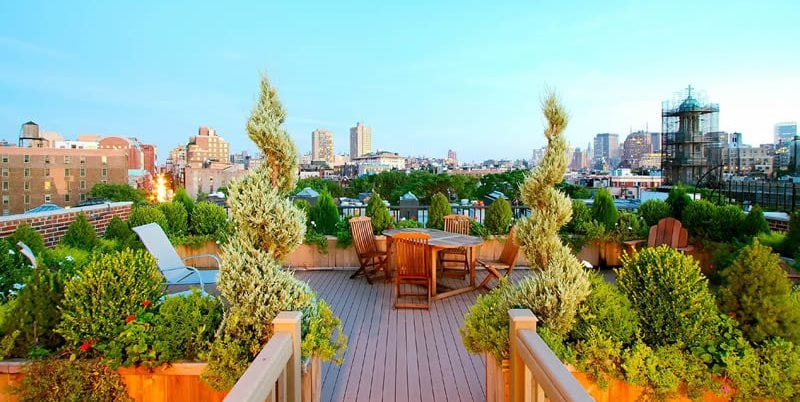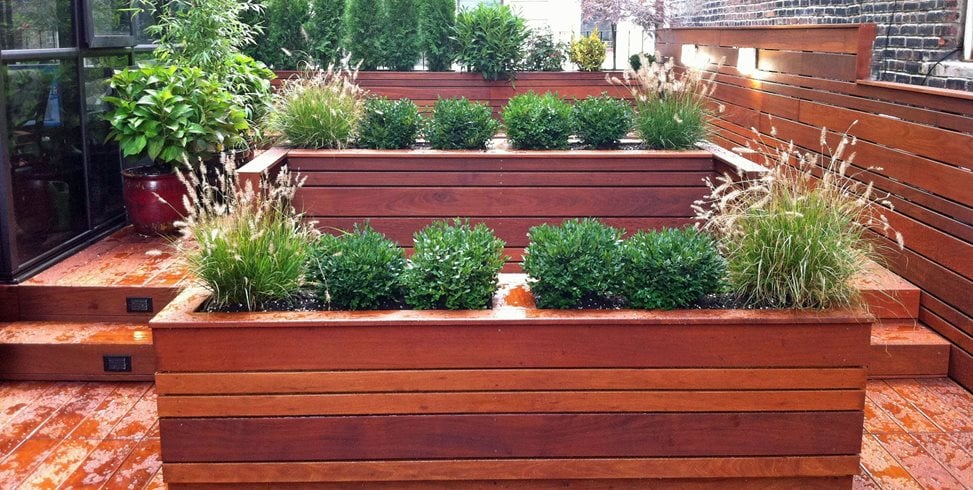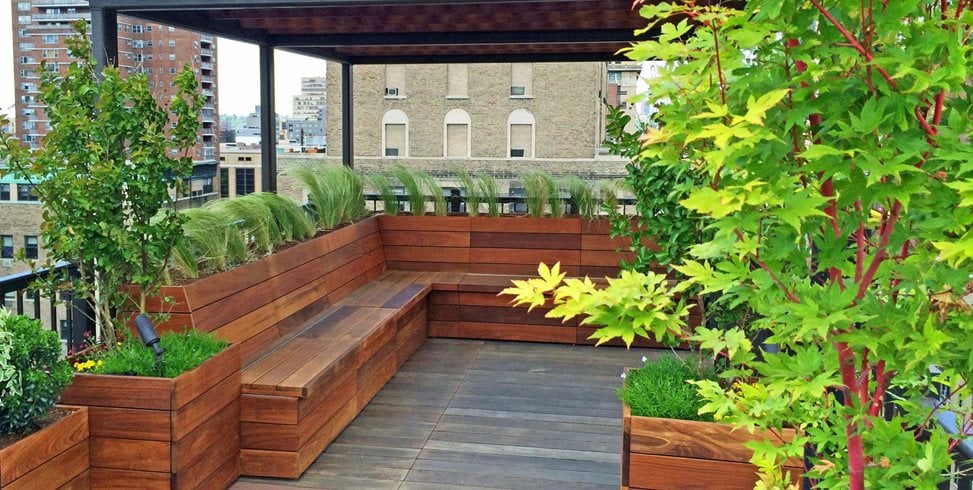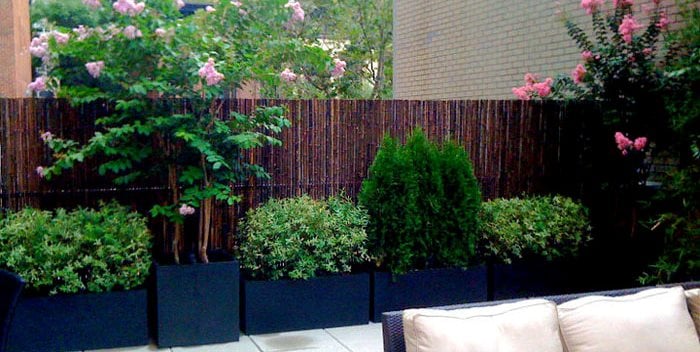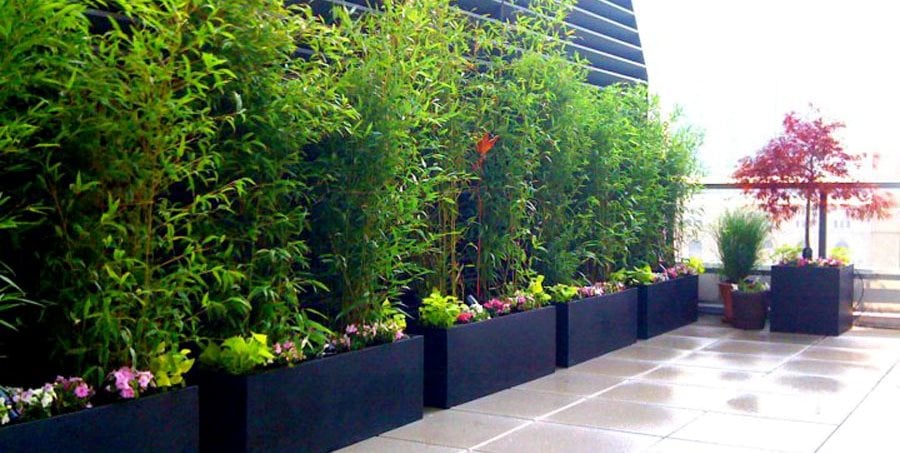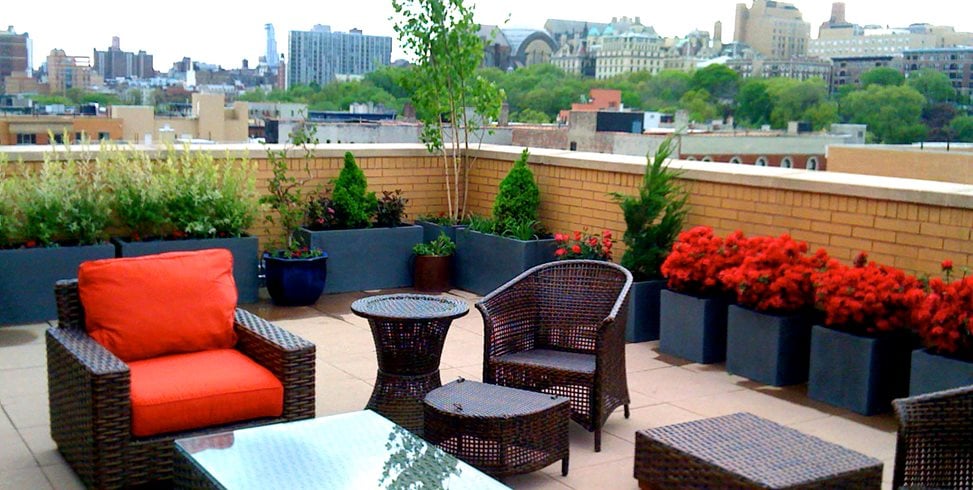Rooftop Garden Guide
Get answers to common rooftop garden questionsAre you thinking of transforming your rooftop into a garden? Rooftop gardening has its own unique challenges and caveats that may surprise even the most seasoned of gardeners. Read these frequently asked questions before heading into the project.
Can I have a garden on my rooftop?
Yes, anything is possible. First, it’s important to know the difference between a roof garden and a green roof. A green roof can be done on any roof, even a slanted one. A green roof usually consists of shallow plastic or metal trays filled with sedums, grasses, or perennial wildflowers. It’s lightweight and easy to install. A roof garden usually consists of larger planters filled with a mix of evergreens, flowers, shrubs, and grasses. A roof garden might also include outdoor furnishings and can be thought of as an outdoor room. A roof garden usually exists on a mostly flat roof surface, due to the weight of the materials and the way the space is going to be used.
GET AMBER'S CHECKLIST FOR DESIGNING ROOFTOP GARDENS
The most basic requirement is that you know how many pounds per square foot your roof can hold so you can determine how much weight it will be able to withstand in terms of decking, planters, furnishings, etc. An architect, developer, or building manager may be able to tell you what the weight-bearing load is for the roof. If that information is unavailable, you may require the services of an engineer and/or a roofing contractor that can do a probe to determine this information.
How can the weight be kept down?
Pre-fabricated wood, fiberglass, and metal planters are usually pretty lightweight to begin with. Custom planters are bulkier and can be designed with false bottoms in them to help reduce the total amount of soil needed to fill them. As far as decking goes, wood or porcelain decking is usually lighter weight than stone or concrete.
What utilities are required for a rooftop garden?
An outdoor faucet is a must for a roof garden. An automated drip irrigation system can usually be installed for around $1,000-2,000, and it will be an enormous time-saver, as well as help extend the longevity and health of the plants. It usually pays for itself within the first year by greatly reducing the need for replacement plantings. An electrical outlet is useful to have if you plan to install low-voltage landscape lighting.
What are some important safety considerations for rooftop gardens?
Railing heights should conform to local laws. You will also want to check out your local laws with regards to flammable materials. NYC only allows 20% of a building’s total roof surface to be covered in wood decking. Umbrellas tend to be a safety concern. There are versions out there that are rated for wind permeability because they have extra vents built into the canopies that allow the air to pass through without lifting the entire thing up like a sail. There are also umbrellas with very heavy bases, like the Tuuci umbrellas, which are 500 pounds and in very little danger of ever being blown off a roof.
How can views, both good and bad, be handled?
We usually block unattractive views of neighboring rooftops, buildings, or walls using plantings like tall evergreens or fencing. We try to keep the more attractive views open by using lower plantings in those areas.
What types of plants are best suited for rooftops?
Gardening on top of a roof can be likened to gardening on top of a mountain. We tend to select plants that are more bottom-heavy than top-heavy to help avoid having them get blown over in high winds. Most evergreens work well for this reason, as well as multi-stem and weeping trees. We also try to avoid plants with large leaves, like elephant ears, which will tend to get easily shredded up by the wind. Finally, we recommend measuring the total number of sunlight hours the space receives per day to help determine whether you should use plants for full to part sun or mostly shade.
What features can be incorporated into a rooftop garden?
There are very specific fire code rules for every city that must be looked into for fire pits and grills. In NYC, the only ones that are allowed are electric, charcoal, or dedicated gas lines. Propane tanks are strictly forbidden. We usually incorporate a combination of high-voltage wall sconce lighting and low-voltage landscape lighting in the planters for a more ambient effect. For shade, we would probably recommend an umbrella, shade sail, awning, or pergola, depending on the aesthetic and budget of the client. Jacuzzis are usually allowed as long as they aren’t too heavy for that particular roof. The most difficult thing with a Jacuzzi is usually getting it to the roof — a crane may be required, which can be pricey.
Amber Freda is recognized across NYC for her landscape design expertise. Her company, Amber Freda Home & Garden Design, offers design and installation of roof gardens, terraces, backyards, patios, and decks.
RELATED:
Rooftop Gardens
Designing a Luxury Rooftop Terrace
Create the Perfect Balcony Garden
